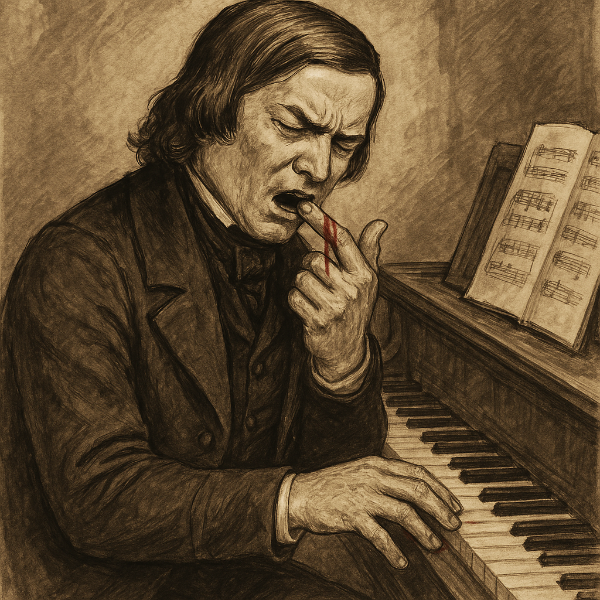Claude Debussy, born on 22 August 1862, returned to Paris in the spring of 1887 after having spent two years at the Villa Medici in Rome. As a lauded winner of the famed Prix de Rome, he had left Paris as an up-and-coming musical superstar but now returned to find a world of severe financial struggle. He frequented the literary and artistic cafés and formed friendships with Paul Dukas, Robert Godet, and Raymond Bonheur.
Debussy’s Meeting With Brahms and Wagner
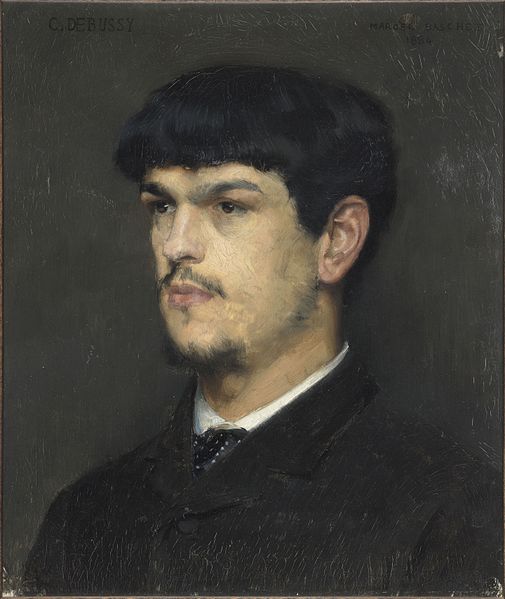
Portrait of Claude Debussy by Marcel Baschet, 1884
Debussy set out for Vienna to meet Brahms in 1887, and we have only conflicting reports of what happened at those meetings. Immediately thereafter, he attended the Bayreuth Festival and saw performances of Parsifal, Meistersinger, and Tristan. He quickly recognized that he needed to free himself from that particular influence and confided to his teacher that “Wagner was less of an innovator than he was generally considered to be.”
Claude Debussy: Fantaisie pour piano et orchestra
Concordantly, the Paris World Exhibition of 1889 awakened his interest in the music of Eastern cultures, and his contact with Mallarmé, Satie, Poe, Chausson, and Maeterlinck saw the completion of a number of works under the influence of symbolist poetry. He worked on the opera Rodrigue et Chimène, with a text by Catulle Mendès for two years, but abandoned the project in favour of Pelléas et Mélisande.
Debussy’s Arrangements for 2 Pianos
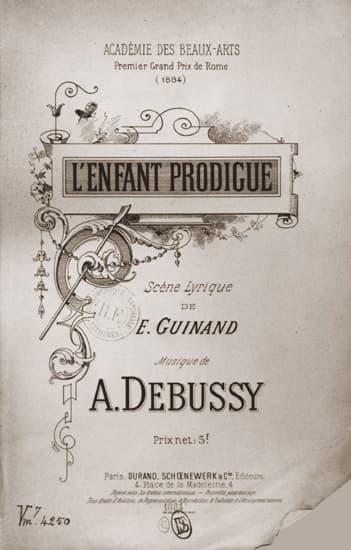
Debussy’s winning entry for the Prix de Rome
With money a constant worry, Debussy accepted various assignments to produce dedicated 2-piano arrangements of orchestral and operatic scores. The singular reason why Debussy agreed to arrange music by Camille Saint-Saëns was a financial one. In fact, Saint-Saëns and Debussy didn’t like each other very much. Saint-Saëns dismissed Debussy’s music “as lacking style, logic and common sense,” essentially calling “his musical aesthetic an atrocity.” Debussy in turn responded, “I have a horror of sentimentality and cannot forget that its name is Saint-Säens.”
Camille Saint-Saëns: Introduction and Rondo Capriccioso (arr. Debussy) (Daniel Blumenthal, piano; Robert Groslot, piano)
Saint-Saëns’ opera Étienne Marcel
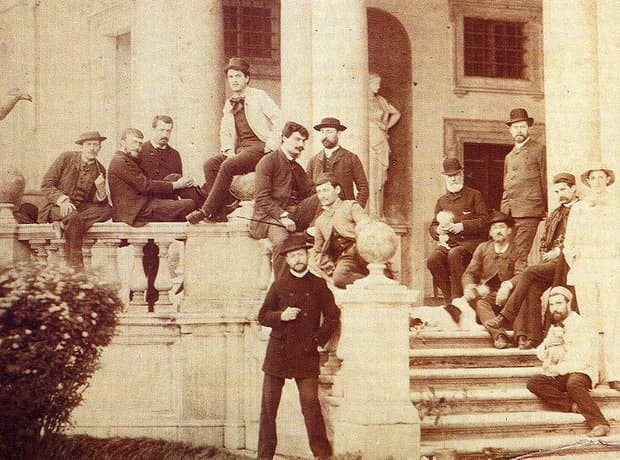
Debussy (fourth from the left) on the steps of the Villa Medici in Rome
Debussy certainly would not have been overjoyed to see Saint-Saëns opera Étienne Marcel on his desk. Critics had long been divided over the merits of Saint-Saëns’ music, which was much revered by the older generation and ridiculed by youngsters. Debussy scorned Saint-Saëns for “bothering the Parisian public by persisting to write operas no one wanted to hear.” The biggest problem with Étienne Marcel was an extremely weak libretto with a plot set in 1358 Paris. It is based on a historical rebellion against Charles V while he was still Dauphin. When the city comes under siege, Étienne Marcel leads a rebellion against the Dauphin and is killed by the evil Jehan Maillard. In a seemingly unrelated sub-plot, Beatrix Marcel, Étienne’s daughter, is in love with Robert, the squire of the Dauphin.
Camille Saint-Saëns: Étienne Marcel, (arr. Debussy) (Daniel Blumenthal, piano; Robert Groslot, piano)
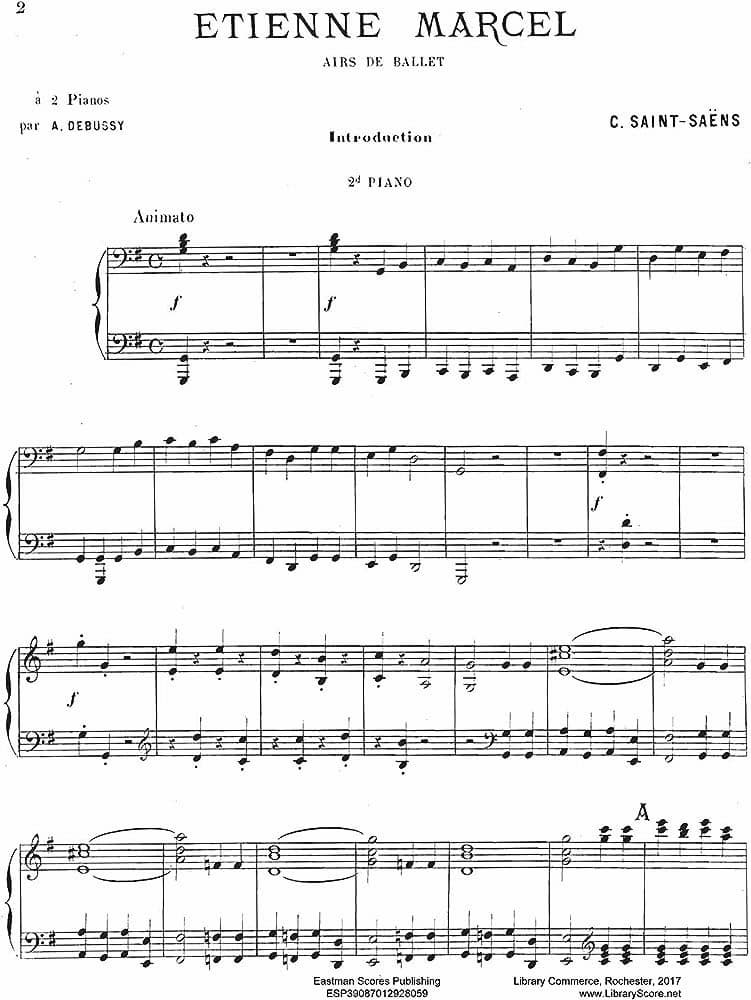
Saint-Saëns’ Étienne Marcel arranged by Debussy
Fortunately in his arrangement for 2 pianos, Debussy did not need to concern himself with the libretto or the plot. Instead, he calmly arranged some of the great musical moments. Since the subject included a large element of spectacle and the usual ballet, the “Suite” contains “a strong element of pastiche.” The habitual introduction is followed by student dances and melodic fragments, with the war-like “Musette” preserving the drone of the French bagpipe. The “Pavane” is highly ornamented, and an anachronistic “Waltz” and “Bohemian Dance” lead to an energetic “Finale.”
Schumann and Beyond
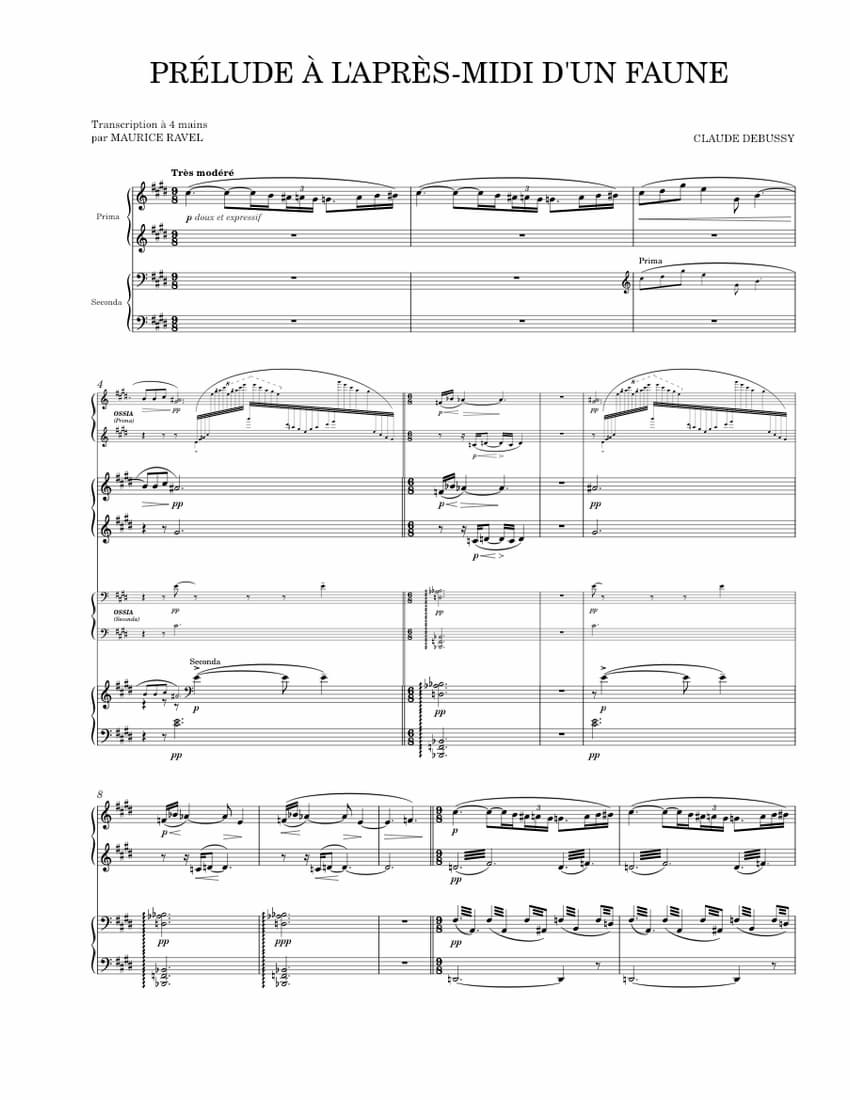
Debussy’s Prélude à l’après-midi d’un faune arranged for piano four hands
Debussy had produced his first arrangements in 1880, while he was employed by
Nadezhda von Meck. He had joined the Meck family in Interlaken, and his duties included playing accompaniments to violin music and songs performed by the children. At the request of Mme von Meck, Debussy transcribed three dances from Tchaikovsky’s ballet Swan Lake for piano 4 hands. She then had them published in Moscow with the approval of Tchaikovsky, but to avoid trouble with Debussy’s teachers in Paris, without the name of the transcriber. Some of this experience was used to very good effect in his 1891 arrangement of
Schumann’s Studien für den Pedalflügel Op. 56, for two pianos.
Robert Schumann: 6 Etudes, Op. 56 (arr. Debussy) (Daniel Blumenthal, piano; Robert Groslot, piano)
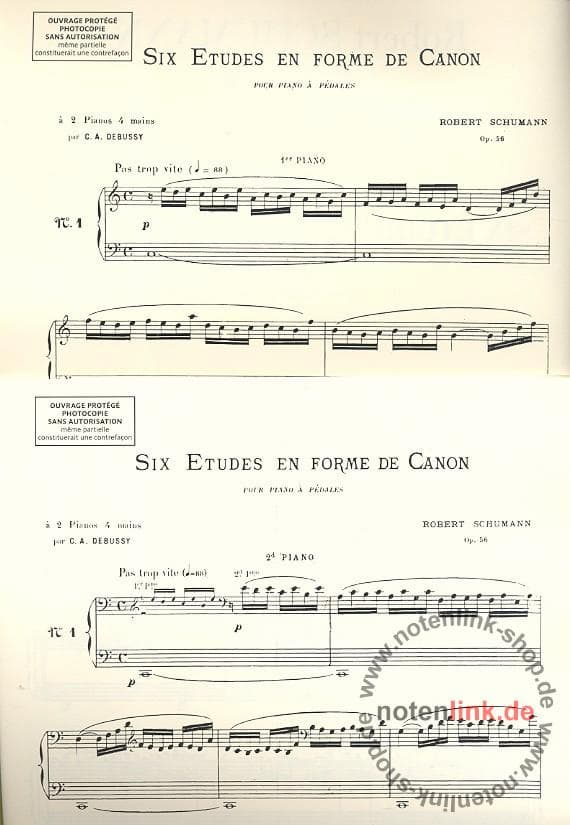
Schumann’s music arranged by Debussy
Debussy produced additional arrangements of works by Wagner and Raff, and his experience as a transcriber and arranger come to full fruition in arrangements of his own works. The symphonic poem Prélude à l’après-midi d’un faune first sounded on 22 December 1894 in Paris. The conductor for the premiere was Gustave Doret, and he writes in his memoirs how Debussy had come to his apartment with the proofs of the orchestral score of the piece and had played it through several times on the piano. Doret writes, “I was amazed at the composer’s ability to reproduce at the keyboard all the orchestral colours and the nuances of the individual instruments, thus creating an apparently perfect interpretation of the work.” In due course, Debussy also produced versions for piano 4 hands and for 2 pianos in hopes that his music would be played more frequently.
For more of the best in classical music, sign up for our E-Newsletter


